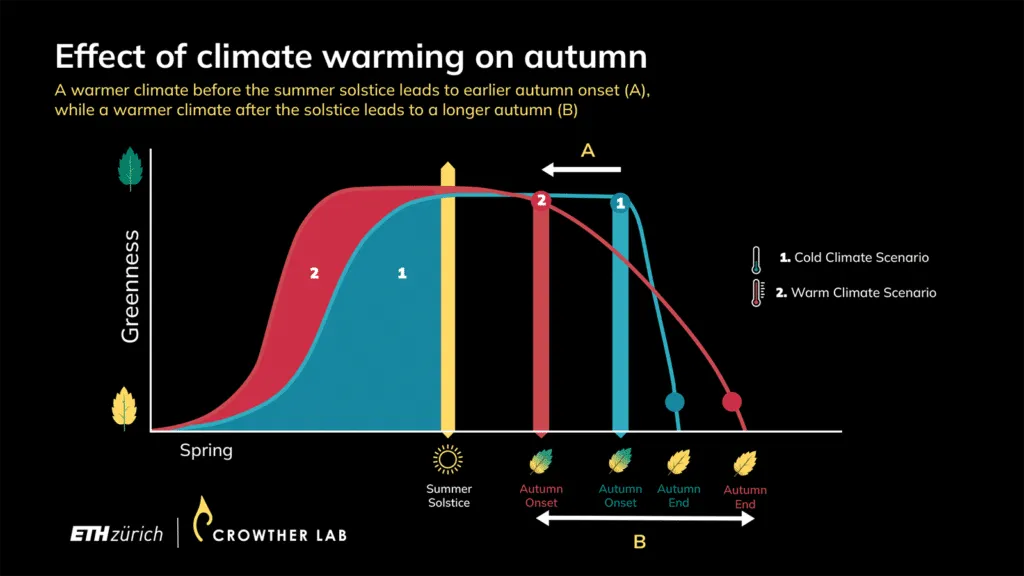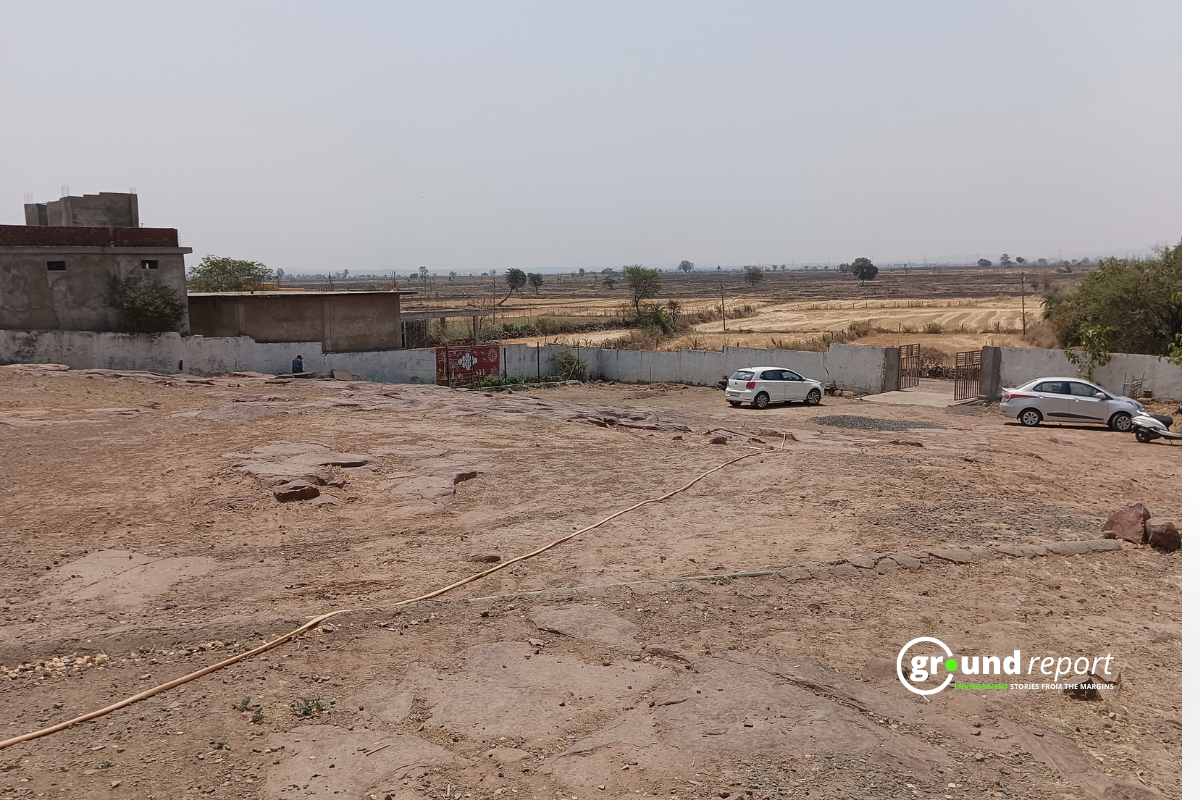A revolutionary study has been published in the esteemed journal Science, shedding light on the enigma of autumn leaf fall timing. The research unravels the significant influence of the summer solstice on the process of leaf senescence, offering valuable insights into the intricate relationship between environmental factors and seasonal transitions.
The study highlights how warming conditions before or after the summer solstice impact the timing and progression of leaf senescence.
Different effects on autumn onset and duration
Forests actively help to mitigate climate change by playing a crucial role as carbon sinks. However, a winter break that occurs annually in temperate and boreal regions constrains the growth of trees and their ability to absorb carbon. Therefore, it is essential to comprehend the precise timing of the conclusion of the growing season under a warmer climate. Effectively modeling global carbon cycles and accurately predicting the future ramifications of climate change rely on this understanding.
The new study delves into the intricate interplay of environmental factors that influence the timing of autumn leaf senescence in northern forests. Combining a wide range of data sources, including experiments, ground observations, carbon flux measurements, and satellite data, the scientists found that warmer weather during the growing season is a key factor for the onset of fall.

Crucially, the researchers found that the effects of climate warming on autumn leaf senescence depend on whether it occurs before or after the summer solstice, an astronomical event that typically falls on June 21 in the Northern Hemisphere.
Pre-solstice warming triggers an earlier onset of leaf senescence, accelerating seasonal cycles in trees and causing decreased photosynthesis. Conversely, warming after the solstice slows the progression of leaf senescence, prolonging the length of autumn and causing leaves to drop later.
Temperature’s impact on leaf senescence
On average, each degree Celsius of warming before the solstice advances the onset of leaf senescence by 1.9 days, while each degree Celsius of warming after the solstice prolongs the senescence process by 2.6 days.
These findings provide valuable quantitative data on the relationship between temperature variations and autumn transitions, facilitating more accurate predictions of landscape changes, carbon storage capacity, and the overall impact of climate change on forest ecosystems.
Dr. Constantin Zohner, lead author of the study, explained that the unique change in effects around the summer solstice is an evolutionary adaptation of the trees. This adaptation allows trees to synchronize their growth rates with changes in day length, optimizing their resource allocation and preparing for the coming winter months.
The groundbreaking findings from the study provide the first comprehensive detection of pre- and post-solstice summer solstice effects on autumn leaf senescence. The results are valid across all continents and forest types, and offer a unified understanding of the constraints and drivers of the growing season.
“Understanding the timing of autumn leaf senescence in temperate and boreal trees is critical for predicting landscape changes, carbon storage capacity, and the overall impact of climate change on forest ecosystems,” emphasized Prof. Dr. Thomas Crowther, lead author of the article.
Autumn leaf senescence: Climate change’s impact
As ongoing climate change continues to alter plant phenology, these findings contribute to our understanding of the terrestrial carbon cycle and biodiversity. While advances in spring leaf emergence dates have been extensively studied, the effects on autumn leaf senescence remain less clear.
The intricate interplay between temperature, day length and early season vegetation activity plays a crucial role in the timing of leaf senescence and requires further exploration for accurate season length predictions. growth and photosynthesis of plants on a broader scale.
As this study unravels the mysteries of autumn leaf fall, it brings us closer to understanding the profound impact of climate change on forest ecosystems. Armed with this newfound knowledge, scientists and policymakers can work hand in hand to develop effective strategies for conservation and sustainable land management, ensuring the preservation of these invaluable natural resources in a warming world.
Keep Reading
Part 1: Cloudburst in Ganderbal’s Padabal village & unfulfilled promises
India braces for intense 2024 monsoon amid recent deadly weather trends
Support us to keep independent environmental journalism alive in India.
Follow Ground Report on X, Instagram and Facebook for environmental and underreported stories from the margins. Give us feedback on our email id greport2018@gmail.com.
Don’t forget to Subscribe to our weekly newsletter, Join our community on WhatsApp, and Follow our YouTube Channel for video stories.









